I thought of “Manmade Things in the Chicago Botanic Garden” as a title, but in a real sense everything in a highly cultivated garden is manmade, even if the raw materials of the displays are descended from naturally occurring plants. Artificial selection invented the tea rose, after all.
The Chicago Botanic Garden includes many things besides plants. Such as this sculpture in the Heritage Garden.
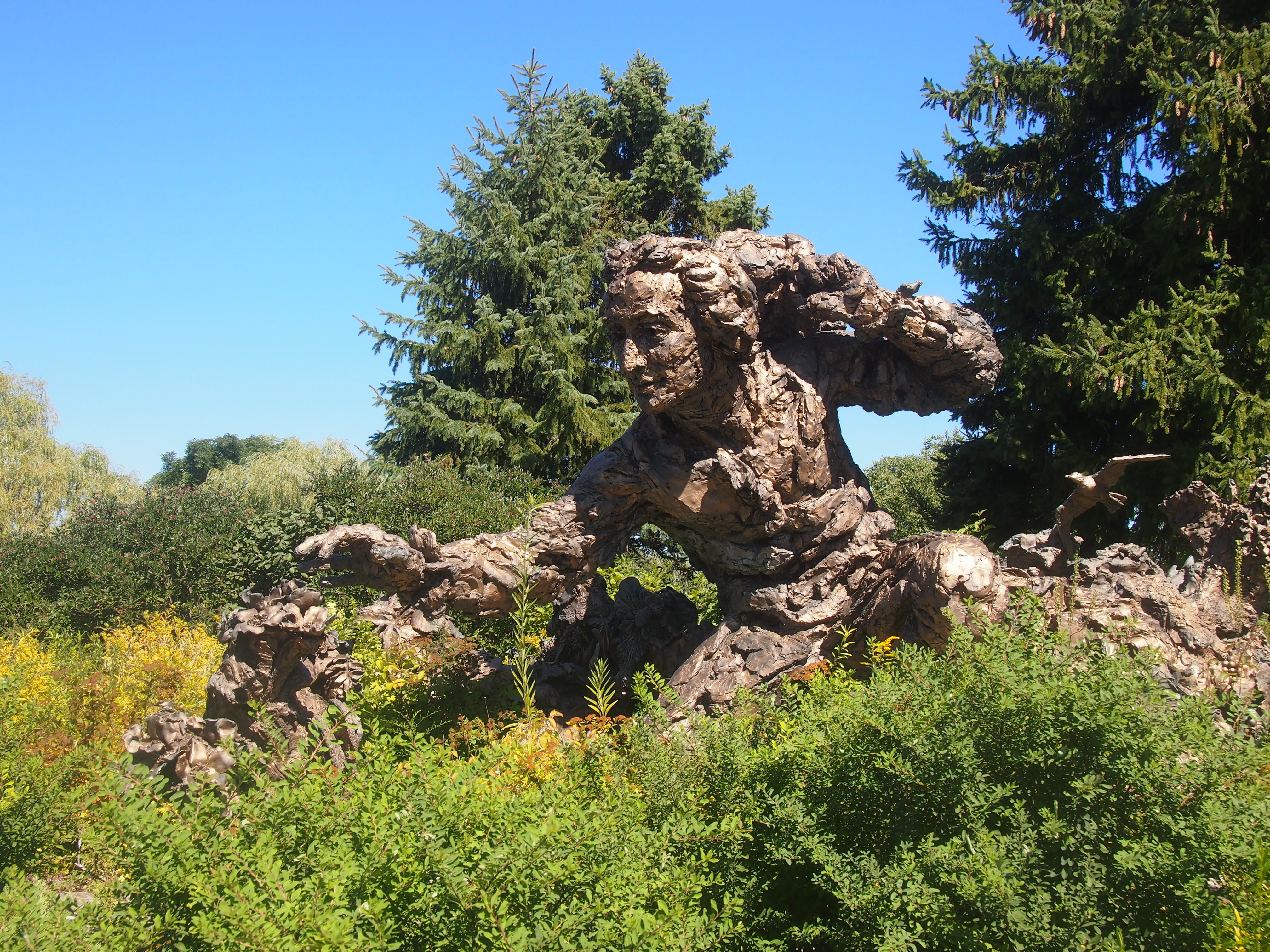 It’s instantly recognizable as a Robert Berks bubble-gum statue, in this case dating from 1982. Based on a casual search, his statues seem to be esteemed these days, especially now that he’s dead, but I’m with the art critics who were upset about the Einstein statue in DC when it was new. They’re ugly. That’s my two-word critique.
It’s instantly recognizable as a Robert Berks bubble-gum statue, in this case dating from 1982. Based on a casual search, his statues seem to be esteemed these days, especially now that he’s dead, but I’m with the art critics who were upset about the Einstein statue in DC when it was new. They’re ugly. That’s my two-word critique.
Anyway, the subject is fitting for a garden, since it’s Carolus Linnæus. In fact, I’ve seen his carved face before in such a place, but a long way from metro Chicago.
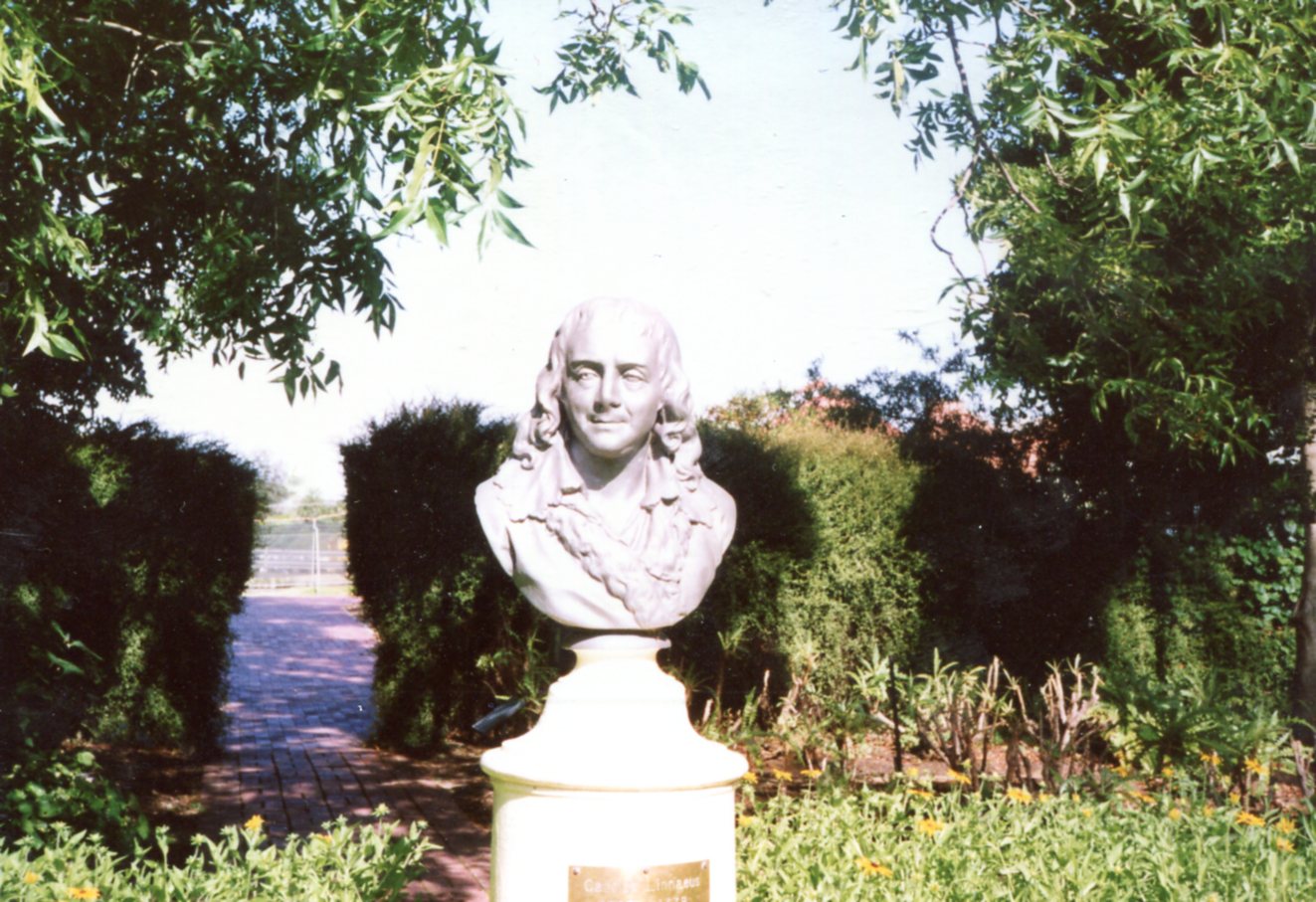 That’s Linnæus at the Adelaide Botanic Garden in 1991. A much more conventional bust, certainly, and maybe not that interesting. But at least it isn’t ugly. More about the Chicago-area Linnæus statue is at the always delightful Public Art in Chicago.
That’s Linnæus at the Adelaide Botanic Garden in 1991. A much more conventional bust, certainly, and maybe not that interesting. But at least it isn’t ugly. More about the Chicago-area Linnæus statue is at the always delightful Public Art in Chicago.
This is “Boy Gardener” in the Rose Garden.
 By an Oak Park sculptor, Margot Mcmahon. Straightforward, unpretentious.
By an Oak Park sculptor, Margot Mcmahon. Straightforward, unpretentious.
In the Japanese Garden, a yukimi lantern.
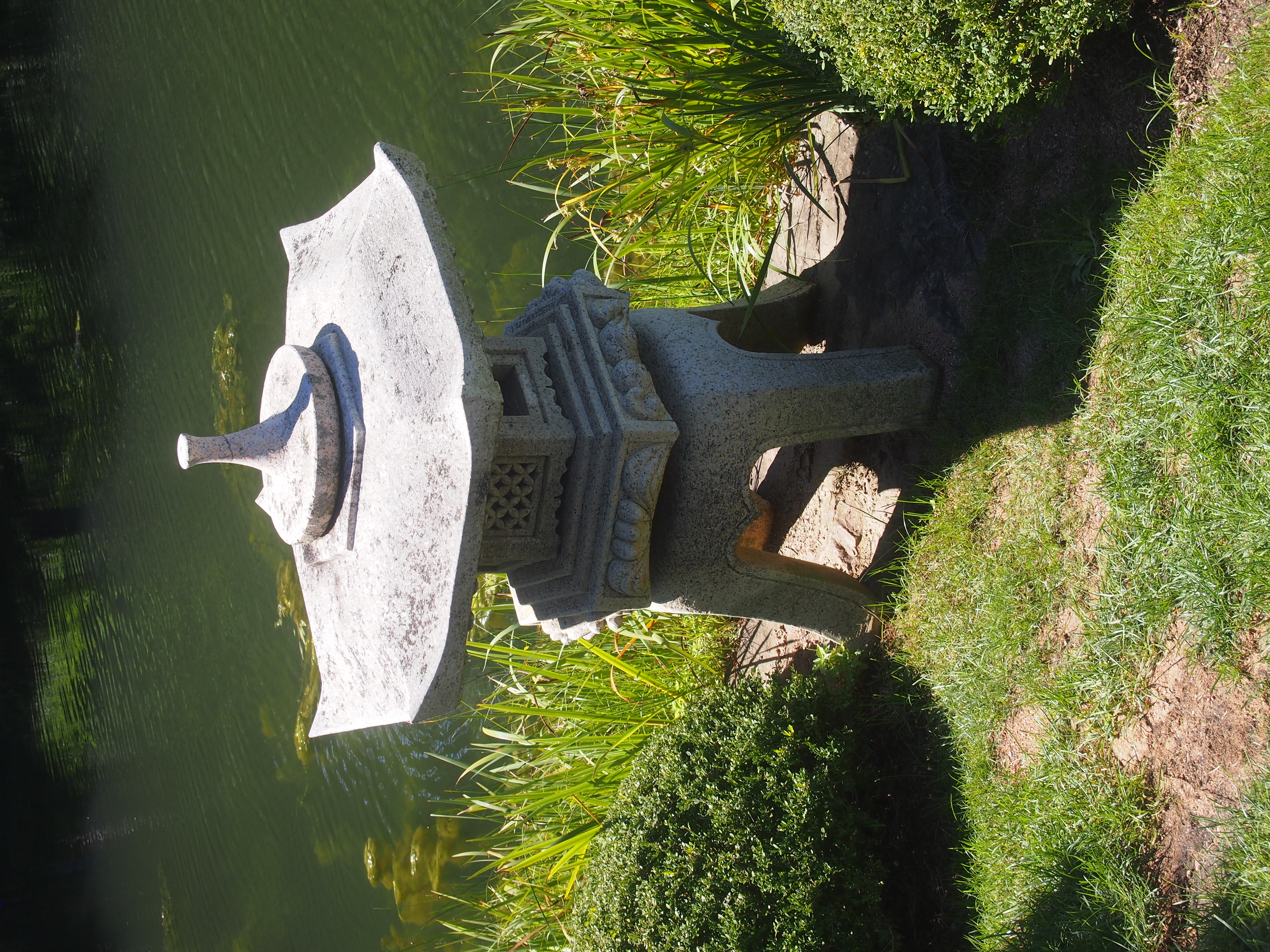 Supposedly it looks elegant covered with snow, and I’ll bet it does. I don’t think I’ll visit the gardens in winter to confirm that, though.
Supposedly it looks elegant covered with snow, and I’ll bet it does. I don’t think I’ll visit the gardens in winter to confirm that, though.
Also in the Japanese Garden, the Zigzag Bridge, with a selfie in progress, and a woman taking pictures of carp.
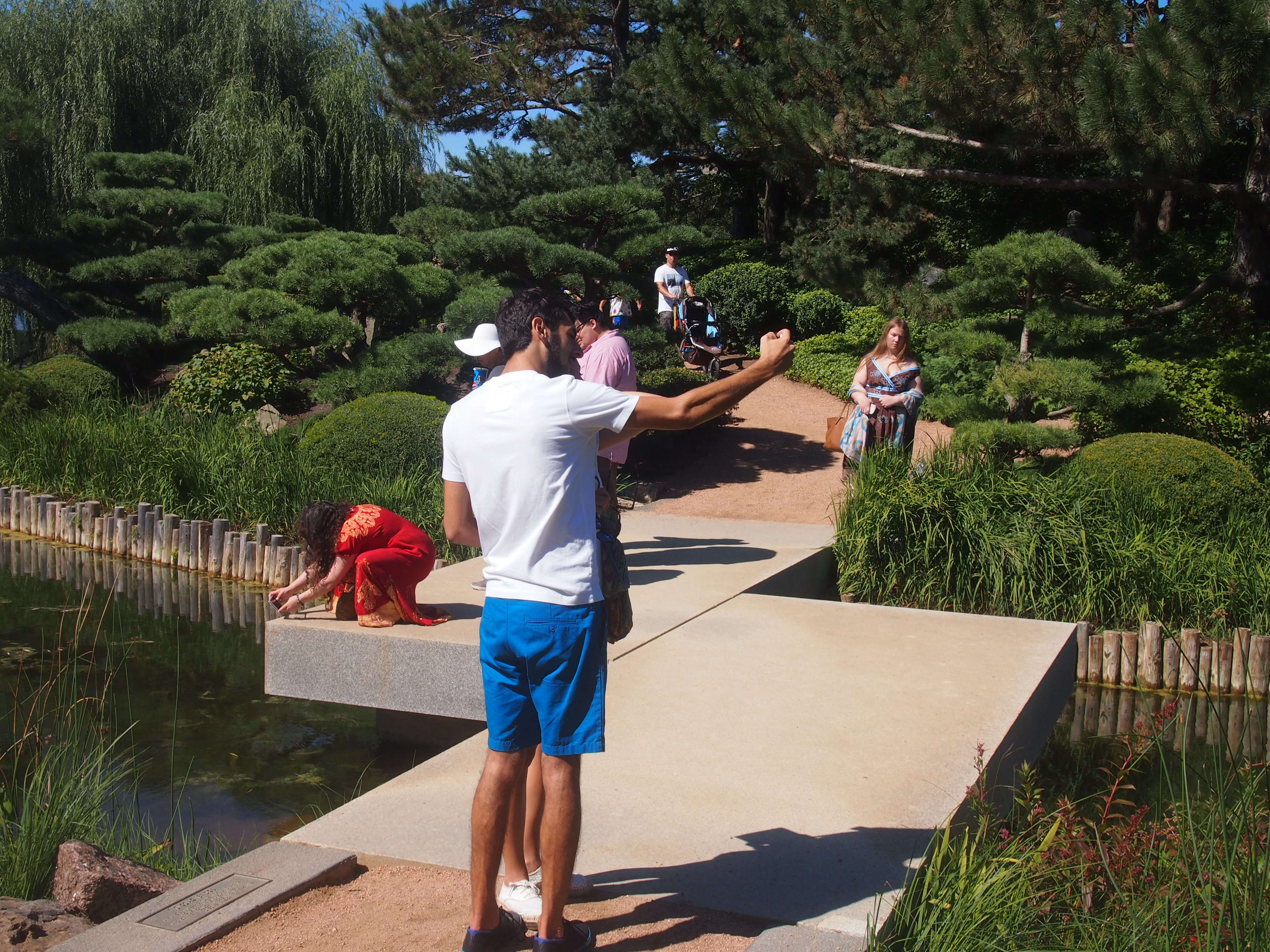 The explanation for its shape is that evil spirits can only travel in straight lines, and thus can’t follow you onto the island. What is it about evil spirits? They’re scared of noise, can’t follow a slight zigzag, and seem to have a lot of other handicaps to keep them from their malevolent work.
The explanation for its shape is that evil spirits can only travel in straight lines, and thus can’t follow you onto the island. What is it about evil spirits? They’re scared of noise, can’t follow a slight zigzag, and seem to have a lot of other handicaps to keep them from their malevolent work.
Here’s one of the bridges between the main part of the garden and Evening Island. Not so distinctive by itself, but it is shaded by enormous willows.
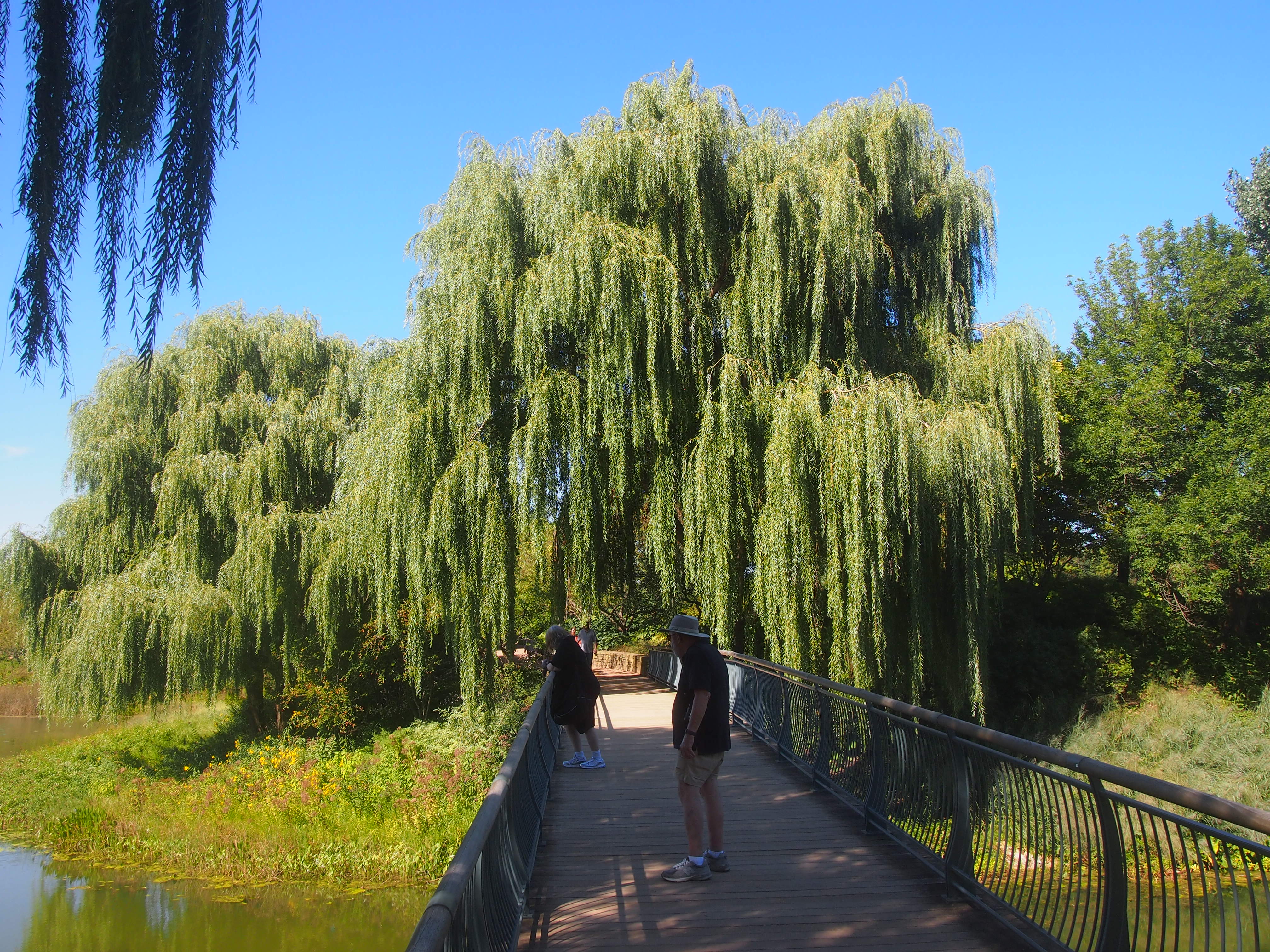 The other bridge to Evening Island has a name, the Serpentine, for obvious reasons. With more willows.
The other bridge to Evening Island has a name, the Serpentine, for obvious reasons. With more willows.
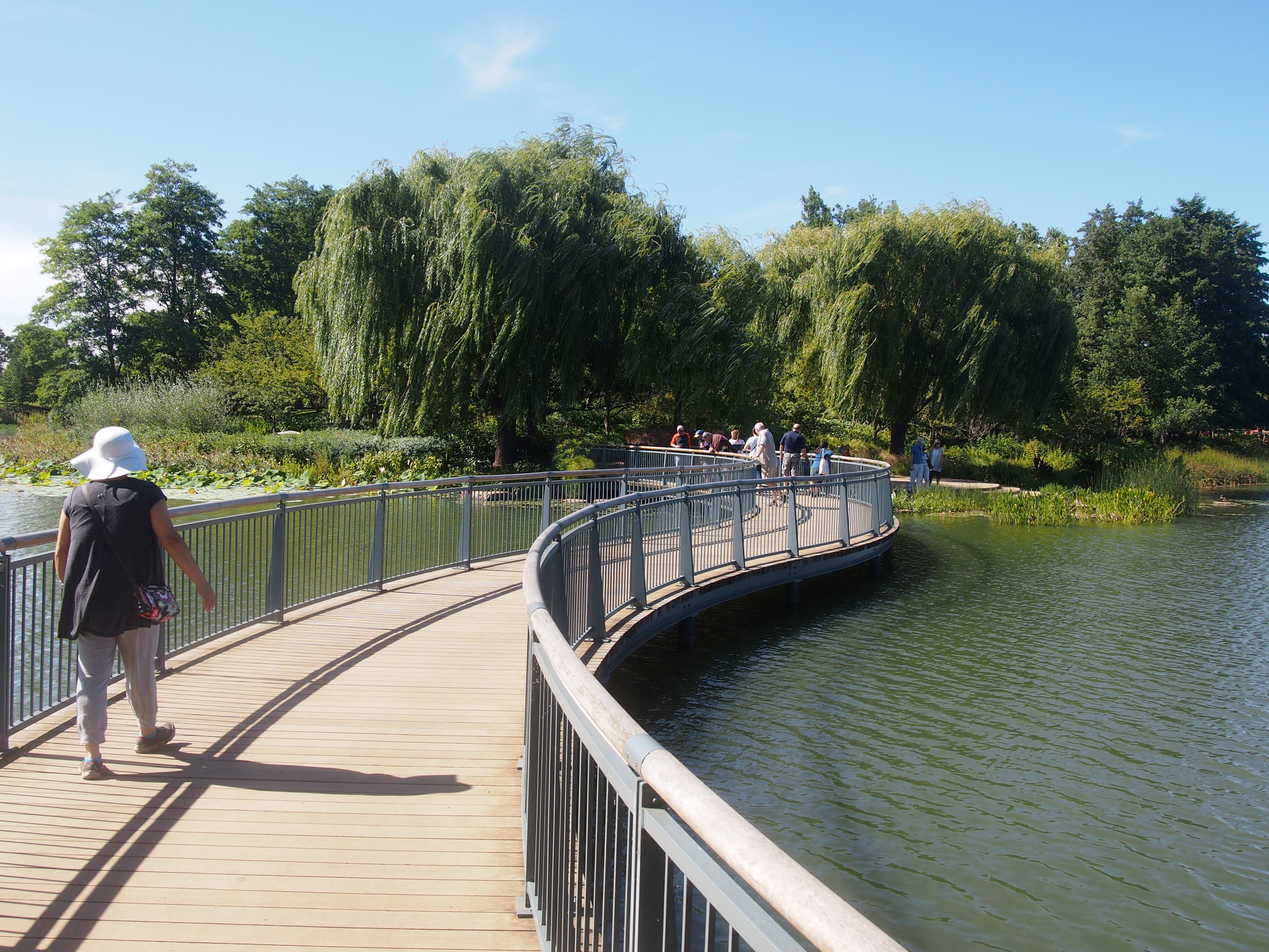 On Evening Island itself, there’s this structure rising from the flora.
On Evening Island itself, there’s this structure rising from the flora.
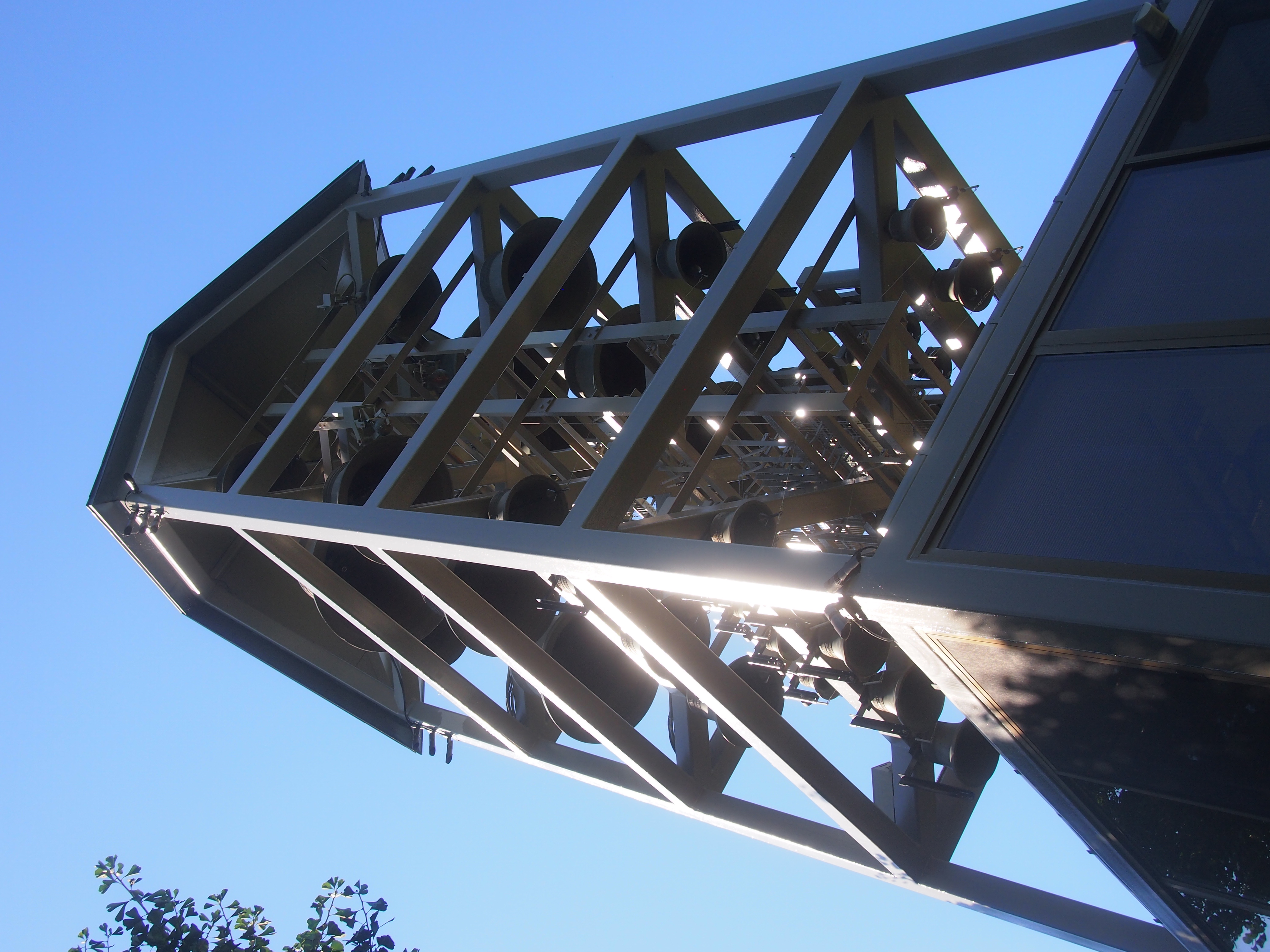 The Theodore C. Butz Memorial Carillon, to give its formal name, installed in 1986. A sign at the base of the structure says, “Crafted in Holland, the Garden’s carillon is one of a few hand-played carillons in the United States. The cast bronze bells have a range of four octaves, and are played using a large keyboard. The smallest of the 48 bells weighs 24 pounds, and the largest weighs two and a half tons.”
The Theodore C. Butz Memorial Carillon, to give its formal name, installed in 1986. A sign at the base of the structure says, “Crafted in Holland, the Garden’s carillon is one of a few hand-played carillons in the United States. The cast bronze bells have a range of four octaves, and are played using a large keyboard. The smallest of the 48 bells weighs 24 pounds, and the largest weighs two and a half tons.”
No carillonneur seemed to be on duty, but we did hear it ring the hour, so I guess it can be set for automatic as well as manual.